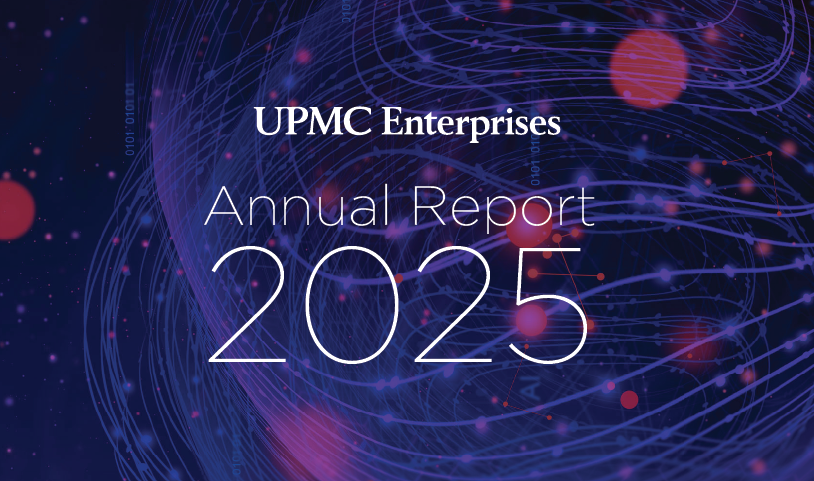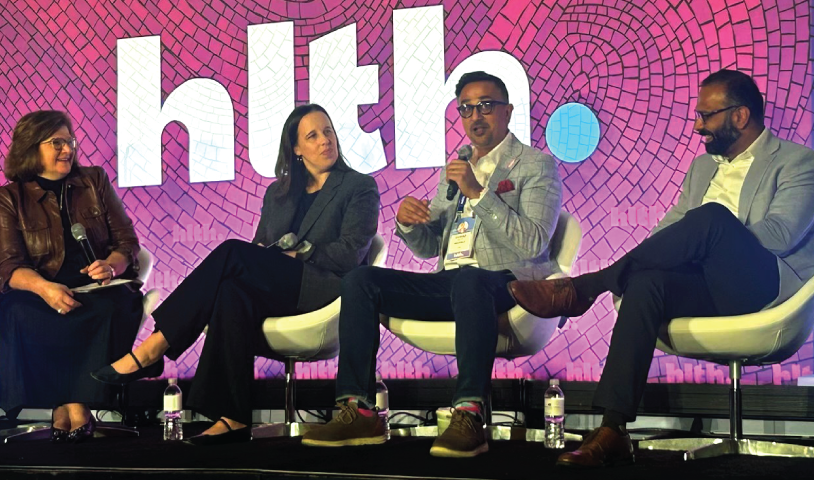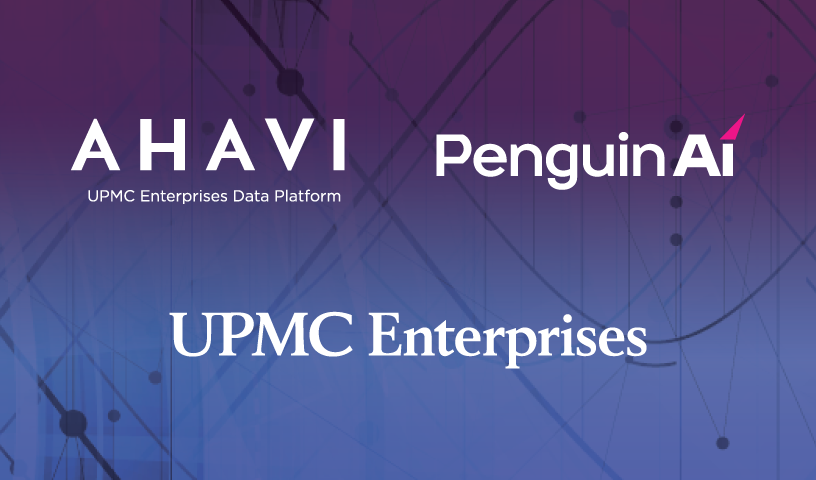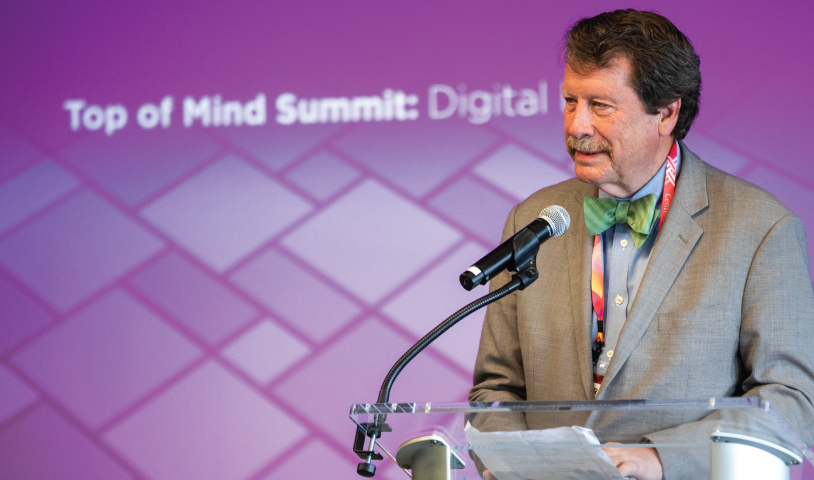
Apr 22, 2025
Seeding Innovation During Uncertain Times: Reflections on the 2025 Top of Mind Summit: Digital Health
Amid a rapidly shifting health care landscape, evolving regulatory environment, and ongoing uncertainty in research funding, Robert M. Califf, MD, offers a measured and thoughtful assessment of the current state of American health care, highlighting both the challenges and areas of potential progress.
The Top of Mind Summit welcomed Dr. Califf, one of the nation’s most prominent voices on biomedical regulation and clinical evidence, and national leaders in health care delivery, insurance, research, regulation, education, and technology to explore solutions for how health care can continue to improve. A key theme introduced by Dr. Califf and carried through the remainder of the event was how health care stakeholders can innovate through times of uncertainty.

Dr. Califf’s keynote, which included a “fireside” conversation with Andrew Watson, MD, MLitt, FACS, senior medical director of the UPMC Health Plan, professor of surgery at the University of Pittsburgh, and senior medical director at UPMC Enterprises, set the tone by acknowledging the current health care climate in the U.S. but also reiterating its inherent potentials.
UPMC Enterprises extends its appreciation to Dr. Califf for his participation and for sharing his insights drawn from decades of leadership in medicine, academia, research, and the federal government.
This story is the first in a series that will summarize key themes from the Summit, which was held April 7-8 at the Center for Connected Medicine at UPMC. Future stories will dive into discussions on:
Click the links above to read recaps of other sessions at the Summit.
A Candid Keynote on the State of U.S. Health Care and the Ongoing Role of AI Advances
The conversation between Dr. Califf and Dr. Watson framed the future of U.S. health care as a mix of uncertainty and opportunity. While the challenges Dr. Califf described — regulatory challenges, eroding public trust, systemic fragmentation — were sobering, there was still much optimism about the strength of American biomedical innovation capabilities and entrepreneurship. What concerned him was not the pace or quality of the advances that are possible in the life sciences, but whether the broader health care infrastructure would be capable of adopting and sustaining that innovation in the years to come.
That message aligns well with the work in which UPMC Enterprises is engaged. The innovation, commercialization, and venture capital division of UPMC is more than just a funder of new technologies, but an active co-developer of the systems and partnerships required to bring innovation to scale across health care. If the U.S. is, as Dr. Califf suggests, presently at risk of “breaking apart the infrastructure” of care and science that currently exists — then rebuilding that infrastructure around smarter, more integrated tools and platforms is just the kind of challenge UPMC Enterprises was created to tackle.
Continuing to Innovate While Facing Ambiguity
The keynote also raised difficult questions about where AI fits into this picture. Dr. Califf urged the audience not to mistake short-term enthusiasm for tech advances with long-term readiness. While AI algorithms and tools are rapidly advancing, the postmarket systems for measuring their impact are still too basic. Many health systems, he argued, are not yet equipped to monitor whether AI tools are achieving the clinical goals they were designed to achieve or just reinforcing cost-efficiency without improving outcomes.
This dynamic, how the goals and objectives of AI tools and technologies are measured and modified to realize continued efficacy, is one which UPMC Enterprises is actively addressing. With the recent launch of Ahavi, a real-world data platform for health care, was created precisely to bridge some of the gaps Dr. Califf described in his talk: enabling the development and testing of AI in a secure, de-identified, and operationally aligned environment.
Dr. Watson emphasized that this level of integration is especially valuable in a payer-provider system such as UPMC, where insights about cost, access, and patient outcomes are interdependent.
“AI has the potential to reveal trade-offs and efficiencies across the payer-provider interface that were previously invisible or too complex to act upon,” Dr. Watson said. “If implemented responsibly, it can help shift our system toward more coordinated, value-based care.”
A Test of Intentionality
Another major theme of the keynote was the intentionality behind technology deployment. AI must be governed not just by its capability, but by its clarity of purpose. Without a defined goal — improved health outcomes, broader access, or system-wide equity — the small- and large-scale deployment of AI tools in health care risks perpetuating existing inefficiencies, biases, and inequities. That may not be the intent, but it is a clear risk.
This dynamic, again, aligns with the way UPMC Enterprises approaches its portfolio strategy. UPMC Enterprises builds, scales and invests in ideas and companies around specific clinical or operational challenges. This dual approach — to invest in technologies but also work to shape the context in which they are adopted — allows for more accountable innovation, where outcomes can be analyzed not just in terms of how venture capital sees the world, but in terms of their impact to health systems and patient outcomes.
Progressing from the Inside Out
Perhaps one of the most spurring messages delivered by Dr. Califf was that from his view, the US health care system, without intervention, is at risk of cracking like “humpty dumpty.” 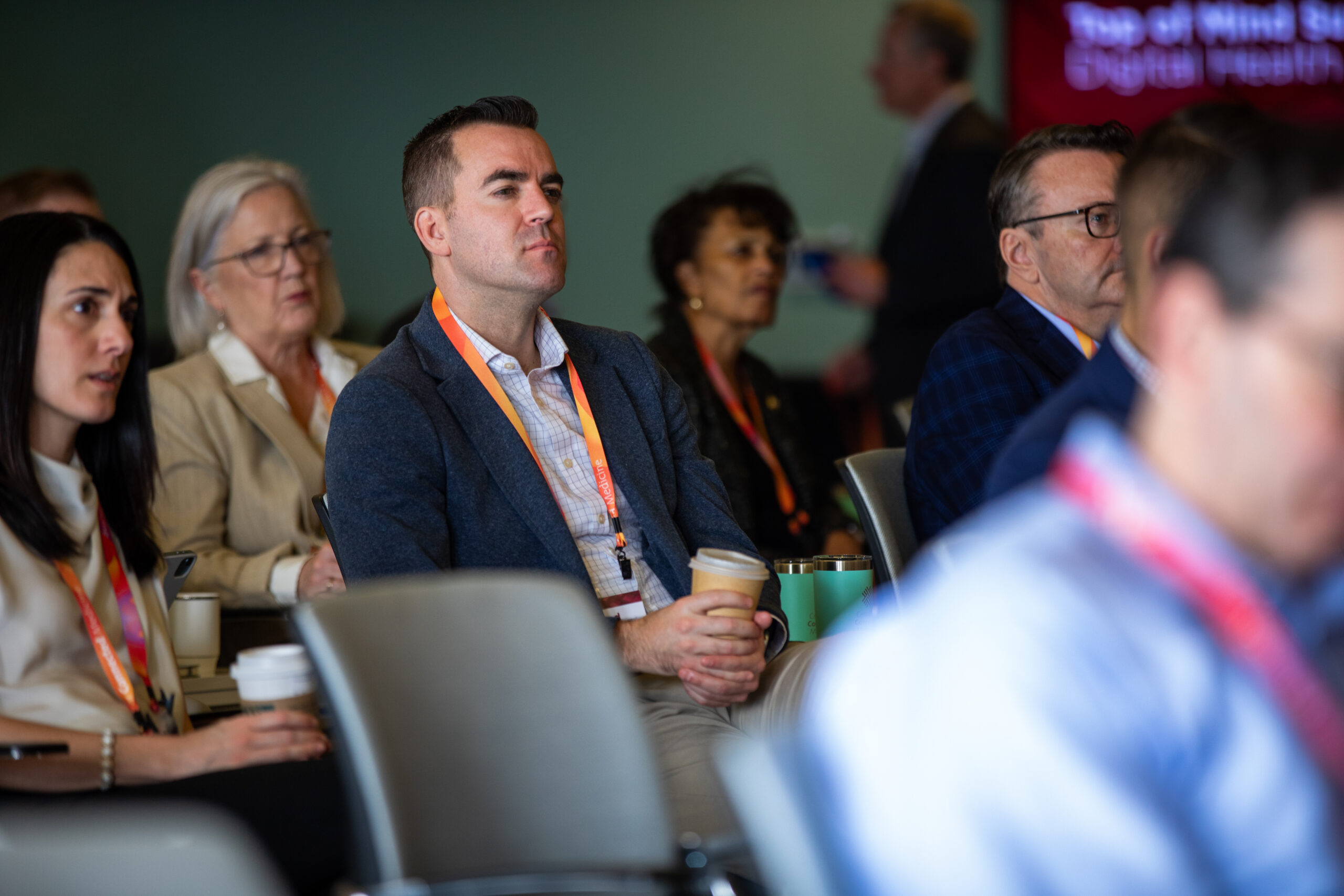
Yet, unlike the nursery rhyme, Dr. Califf argued that Humpty Dumpty could be put back together again. In his view, that work will be accomplished provided the leaders tasked with rebuilding are equipped with the right tools, the right incentives, and a commitment to improving human health and well-being.
As the health care system comes to terms with ongoing regulatory shifts, economic constraints, accelerating innovation, and the march of AI, the message from the Summit is that the way forward depends on institutions navigating uncertainty with clarity.
Next Steps
- Learn more about this year’s Top of Mind Summit: Digital Health.
- Read all our Top of Mind reports and event coverage.
